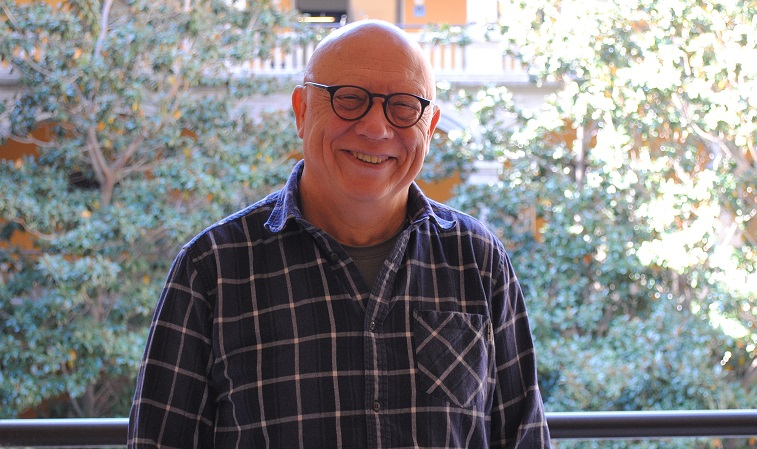
Xavier Hernández «We try to get people to see, touch, and experience the past»
rofessor Xavier Hernández heads the research group Didactics of Heritage, Comprehensive Museography, and New Technologies (DIDPATRI) of the University of Barcelona, a group of historians who work to recreate historical events with the aim of bringing history closer to the broadest possible spectrum of society.
How important is history for society?
We are convinced that history gives us a functional knowledge that allows us to interpret the present. Usually people decide very little in their daily lives because many things are already established at birth: the language we speak, beliefs, food, and clothing, among others. History is the great force that conditions our present, and understanding it grants us the ability to react, and provides us with control and independence. It also makes us freer because it enhances our decision-making capacity. Otherwise we would be slaves to the culture of the past. Hence, people are increasingly interested in everything related to the past.
What does DIDPATRI do?
Most of us are art historians who try to make historical knowledge comprehensible to the widest possible segment of the population. The past is like a great iceberg underwater and we just see its tip. It’s difficult, but we try to get people to see, touch and experience the past so that they can understand it. Today people are interested in this because this is a kind of practical knowledge that lies at the basis of an important industry related to cultural tourism.
How do you plan to achieve such a goal?
We create products for two basic areas: formal education, for which we produce school materials, itineraries, workshops, etc., and the general public, for which we create different types of museums and exhibitions, both real and virtual.
Our task is to concretize the kind of abstract knowledge that is indeed the past. Thus, for instance, when dealing with a certain political, military or economic event, we must provide its keys and accompany them with images for this event to be understood. We use different strategies, such as developing a didactic iconography, simulations, recreations, and various resources related to new technologies. In this sense, when we study, for example, a city and then rebuild it in 3D, we also record images of recreation groups and then superimpose them to generate a final product in which you can see a totally rigorous recreation accompanied by people interacting. This product can then be used interchangeably for apps, posters, books, and guides. Not long ago we had an interesting experience along these lines in La Seu d’Urgell, and at the moment we are working on a project with the Sant Ferran castle in Figueres and have also presented a proposal for the castle of Roses.
How important will the new technologies be for the tourism of the future?
The future that awaits us is extraordinary. We cannot actually experience history, but nothing will prevent us from using computational procedures that will be useful for research. We cannot experience a space of the past either, because it no longer exists, but with the help of computing, we can replicate different situations to analyse the different variables and the different agents involved in them. We have extraordinary possibilities for the reconstruction of spaces and to show them as they were, and we can do so in a way that is coherent and extremely rigorous, which is the most important thing for us as scientists.
The goal should now be to better understand the past by using new technologies borrowed from other disciplines. With the new resources, there will come a time when, through a smartphone, we will be able to create holograms of historical figures, such as Cleopatra, for example, and these holograms will be prepared to answer the four thousand most usual questions.
Why is it so difficult to integrate history and new technologies?
Biology and computer science, for example, have been able to work together very well by creating a great biotechnology environment that has revolutionized many things. However, in history this has not been the case, and therefore a deep relationship with technological resources has not yet been established. The moment this occurs, which will be in the next few years, we will have taken a very important step forward to better gain knowledge and to disseminate and better publicize historical contents.
One of the problems we have is that the academic environment is not aware of all the opportunities the market offers for history. This results in the spaces of dissemination, communication and didactics of science occupied by designers, journalists or architects instead of historians. There is an important work to do here, so that the students are also trained in outreach, in the communication and the dissemination of their own discipline, for generally they consider that this is not their job.
This lack of awareness makes us go a bit against the tide and forces us to take advantage of the cracks that may appear in the market, which are very limited. In this sense, we must admit that we are lagging behind, and therefore, as professionals of didactics we find that while academia goes in one direction, the market goes in another one, and this is a problem. What we have to do is to keep academia in step with the market and generate products of interest.
More about Xavier Hernández
A historical figure: there are many I like, but let me say Leonardo da Vinci.
A historical figure that gives you the chills: Adolf Hitler.
An invention you would like to see: the time tunnel.
The FBG is… an institution with which we have collaborated for almost twenty years and with wich we have always had a positive experience.

